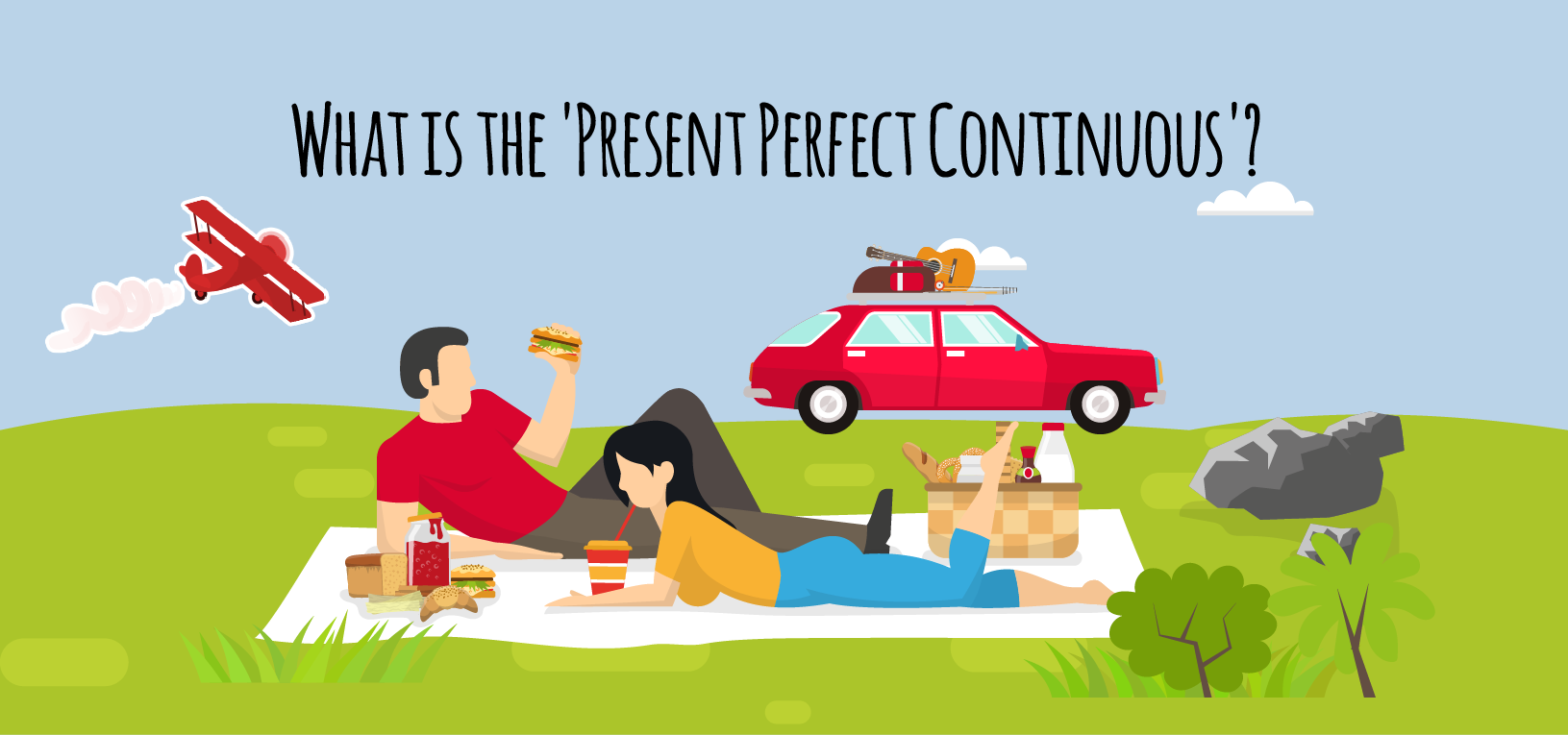What is the ‘Present Perfect Continuous’?

What is the ‘Present Perfect Continuous’?
ÍNDICE DE CONTENIDOS
Perhaps reading the title of this article suggests a wrong interpretation, even calling it “Present Perfect Continuous” the reality is that it is not a present tense , on the contrary it is in the past. Its name is a consequence of the fact that it is used fundamentally to talk about actions that have started in the past, but that takes place in the present. Consequently, it corresponds to the present perfect Spanish continuous: José and his girlfriend have been walking all morning: (josé y su novia han estado paseando toda la mañana).
Present perfect continuous formation in English
We must pay attention to the formation of this tense, because it is somewhat complicated: Subject + auxiliary verb “to have” + “been” + verb + ing. However, unlike the “Present Perfect Simple”, you don’t have to know the participle of the verbs in question.
Present Perfect Continuous negative and interrogative:
The negative and interrogative of the Present Perfect Continuous is formed in the following way:
- Affirmative : Subject + ‘to have’ + been + verb + ing:
“Maria and Carmen have been talking at home all morning”
(Maria y Carmen han estado hablado en su casa durante toda la mañana)
- Negative : Subject + ‘to have’ + ‘not’ + ‘been’ + verb + ing
“José Manuel hasn’t been reading Don Quixote for a long time”
(José Manuel no ha estado leyendo El Quijote por mucho tiempo)
- Interrogative : ‘To have’ + subject + ‘been’ + verb + ing +?
“¿Have Pilar and Maria been playing for a long time?”
(¿Pilar y María llevan mucho tiempo jugando?)
Present Perfect Continuous outline in English
As we see the ‘Present Perfect Continuous’ when indicating an action over a period of time, it is normal that it is usually accompanied by the prepositions “For” (“Desde hace” / “desde”) and “Since” (‘hace’ ).
Also the ‘Present Perfect Continuous’ admits contractions for the auxiliary verb “To have” , for example: “I have” – “I’ve”; “I have not” – “I” see not “; “She has” – “She’s”; “He has not” – “He hasn” t “.
What is this tense used for?
We repeat that the Present Perfect Continuous is often used in English especially to narrate actions that began in the past and yet continue in the present.
That is, the process or action itself matters. Example of “Present Perfect Continuous”:
- “My son has been waiting for you all morning”.
(“Mi hijo te ha estado esperando toda la mañana”).
The “Present Perfect Continuous” is also often used to determine actions that have just concluded whose results interest us a lot and that is why it is usually visible in the present or may remain latent in it.
However, we must take into account a very important exception: the “Stative Verbs” (which are the verbs related to a “static” state so they do not express any action, such as “Believe” – ”Believe” or also ” Love ”- ‘Want’) is to say that they do not accept the progressive form. That is why these verbs have to be formed with the “Present Perfect Simple” and not with the “Present Perfect Continuous”. We have to be very attentive!
The “Present Perfect Continuous” and the “Present Perfect Simple”
The “Present Perfect Continuous” and the “Present Perfect Simple” are times quite forgotten by English learners; and for this reason they are frequently very confused in practice, although not because of their structure, which as can be seen are quite different. The question then is
How can we distinguish continuous from simple time?
This will depend a lot on where we put the emphasis:
- If the interesting thing is to highlight that the action occurred in the recent past or / and that it has repercussions in the present , then you should use the “Present Perfect Simple”. Because in this case the important thing is the result of the action itself. Example of “Present Perfect Simple”: Cecilio wrote an email (the important thing is the result of the action of writing. That is, the email).
Now, if the important thing is to highlight that the action has continued in time until the present (inclusive), in this case you must choose the “Present Perfect Continuous”. That is, the most important thing is the duration or continuity of said action.
- Example of ‘Present Perfect Continuous’: “Smith has been working all day” (which means that Smith has been working 24 hours a day, when his work is heavy and dangerous) .
Finally, we remind you that if you want to obtain an official degree in any language, we leave you the number 1 online platform.



